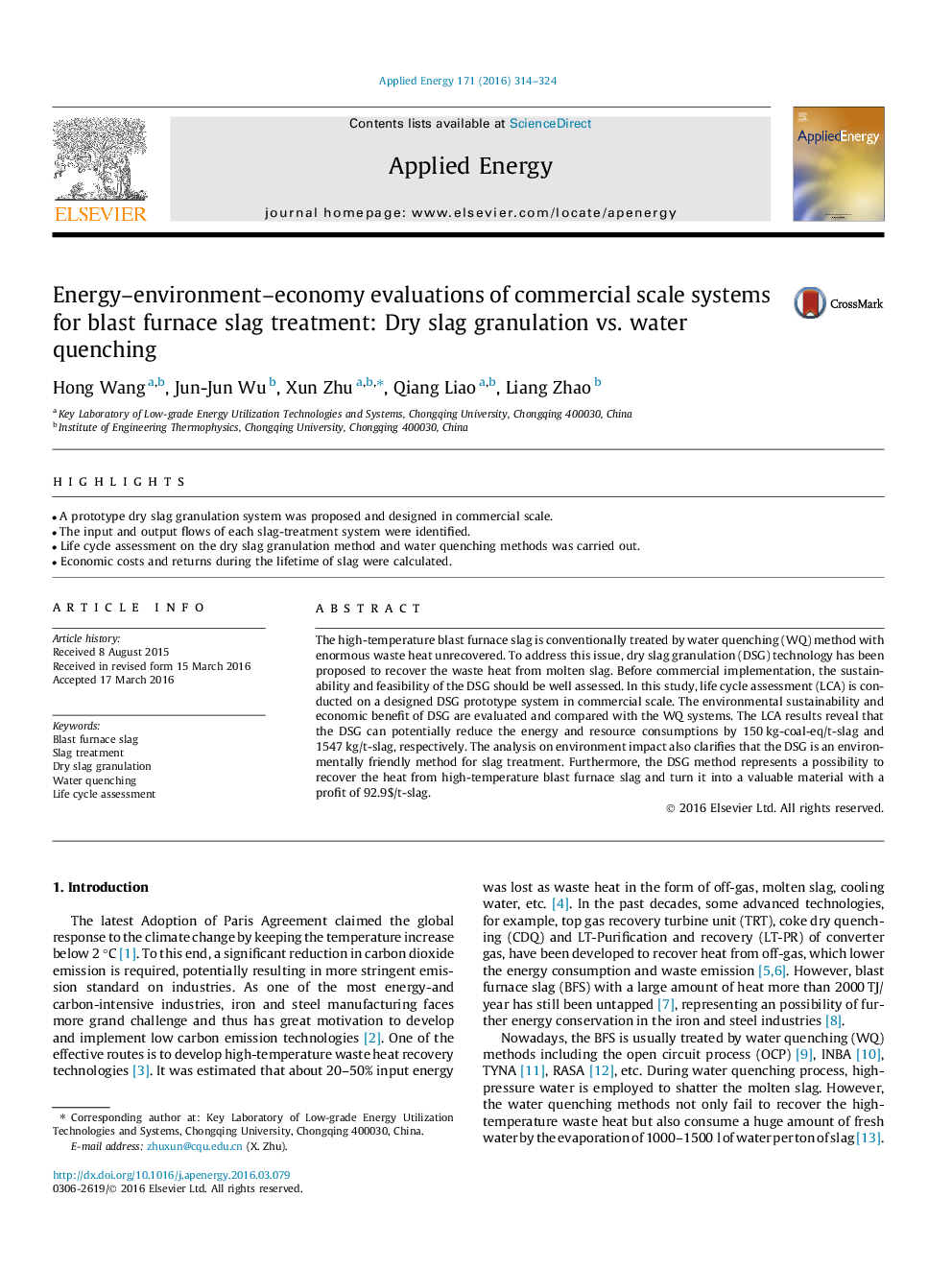| Article ID | Journal | Published Year | Pages | File Type |
|---|---|---|---|---|
| 6683312 | Applied Energy | 2016 | 11 Pages |
Abstract
The high-temperature blast furnace slag is conventionally treated by water quenching (WQ) method with enormous waste heat unrecovered. To address this issue, dry slag granulation (DSG) technology has been proposed to recover the waste heat from molten slag. Before commercial implementation, the sustainability and feasibility of the DSG should be well assessed. In this study, life cycle assessment (LCA) is conducted on a designed DSG prototype system in commercial scale. The environmental sustainability and economic benefit of DSG are evaluated and compared with the WQ systems. The LCA results reveal that the DSG can potentially reduce the energy and resource consumptions by 150Â kg-coal-eq/t-slag and 1547Â kg/t-slag, respectively. The analysis on environment impact also clarifies that the DSG is an environmentally friendly method for slag treatment. Furthermore, the DSG method represents a possibility to recover the heat from high-temperature blast furnace slag and turn it into a valuable material with a profit of 92.9$/t-slag.
Related Topics
Physical Sciences and Engineering
Energy
Energy Engineering and Power Technology
Authors
Hong Wang, Jun-Jun Wu, Xun Zhu, Qiang Liao, Liang Zhao,
